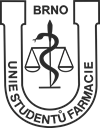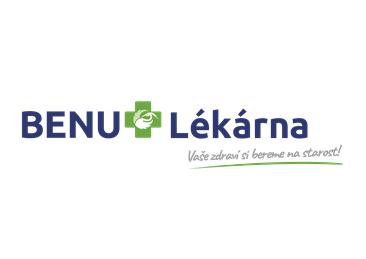Section of Pharmaceutical technology & Social pharmacy
-
12:15 Daria Sapunova
BISPHENOL URINE LEVELS AND EXPOSURE DETERMINANTS IN TEENAGERS AND YOUNG ADULTS IN THE CZECH REPUBLIC
Authors: Daria Sapunova1, Jiří Kalina1, Jiří Kohoutek1, Pavel Piler1, Lenka Andrýsková1, Jana Klánová1
1RECETOX Centre, Faculty of Science, Masaryk University
e-mail: daria.sapunova@recetox.muni.cz
Key words: human biomonitoring, bisphenols, BPA, BPS, BPF
Bisphenol A (BPA) and its replacements bisphenols S and F (BPS and BPF) are man-made compounds, widely used as plasticizers in plastic materials and in the manufacture of epoxy resins1. Their endocrine-disrupting properties2 are of concern due to the broad use of consumer products containing bisphenols in everyday life such as plastic containers, food packaging, cans lined with epoxy resin, car and home interiors. In this study, we measured BPA, BPS and BPF in spot urine of teenagers and young adults, compared the bisphenols levels among other European countries within the same age groups and attempted to estimate associations between the concentrations and questionnaire data that could reflect potential sources of exposure.
This study utilized two Czech cohorts of teenagers (12-18 y.o.) and young adults (18-37 y.o.), and the questionnaire data consisting of 203 questions that were considered as bisphenol exposure predictors. Associations between the predictors and the concentrations were tested using various non-parametric tests.
For BPA, BPS and BPF, the specific gravity adjusted levels found in teenagers were significantly lower than in young adults (medians of 1.490 vs. 1.823 µg/L for BPA, 0.177 vs. 0.225 µg/L for BPS and 0.024 vs. 0.202 µg/L for BPF) suggesting together with the declining association to age that the exposure increases during the early stages of life, but it becomes constant in the adult stage. Several other lifestyle related exposure patterns were observed especially for BPS, mainly related to use of cosmetics. Comparison of bisphenols concentration in the Czech Republic with other European countries demonstrated that the Czech population is exposed at the average level.
References
1 (a) Corrales J, Kristofco LA, Steele WB, Yates BS, Breed CS, Williams ES, Brooks BW. Dose Response 2015 Jul 29;13(3); (b) Huang, R. ping, Liu, Z. hua, Yin, H., Dang, Z., Wu, P. xiao, Zhu, N. wu, Lin, Z. Science of The Total Environment 2018, Vol. 626, p. 971–981; (c) Kang, J.H., Kondo, F., Katayama, Y. Toxicology 2006, Vol. 226, p. 79-89.
2 (a) Li, J., Zhang, W., Zhao, H., Zhou, Y., Xu, S., Li, Y., Xia, W., Cai, Z. Environment International 2020, Vol. 134, 105304; (b) Ma, Y., Liu, H., Wu, J., Yuan, L., Wang, Y., Du, X., Wang, R., Marwa, P.W., Petlulu, P., Chen, X., Zhang, H. Environmental Research 2019, Vol. 176, 108575.
-
12:30 Marek Navrátil
ALGORITHMIC PUBLIC HEALTH: A RESEARCH AGENDA
Authors: Marek Navrátil1
1 Department of Public Economics, Faculty of Economics and Administration, Masaryk University
e-mail: marek.navratil@econ.muni.cz
Key words: public health; artificial intelligence; health promotion; decision-making
In the health policy space, focus is often placed on medicine in lieu of public health (PH), although the latter can have even greater impacts on the lives of citizens and outcomes of the system1. In Czechia, the focus of the main public health agency (SZÚ) centers on health protection and support, mainly around occupational health and disease transmission2. The area of “health promotion” is not currently addressed on a systemic level.
There is great promise in programs attempting to influence citizens’ behavior towards better health outcomes, although these efforts are difficult to implement and evaluate3. New approaches to the practice of healthy lifestyle promotion (HLP) can be unlocked with the use of new data-driven tools based on artificial intelligence (AI). These technological innovations can contribute to better prediction of possible negative health states, allowing for more successful prevention efforts4. There is a clear link between the accuracy of prediction and the success rate of prevention: the better our societies become at predicting future events, the better our preventive efforts. With this vision also comes a host of ethical questions and challenges, which have been widely discussed in the literature.
A literature review the author recently conducted identified the situation in adopting AI-based principles in PH. Multiple reviews and implementation considerations have been identified, although there is a lack of thoroughly evaluated PH programs, especially in HLP. The research gaps also show the potential to further explore how the inefficiencies in current PH policymaking can be transformed when algorithms are introduced in the decision-making process. Such an analysis would be useful to better understand the Czech PH context.
References
1 GRIFFITHS, S., T. JEWELL a P. DONNELLY. Public health in practice: the three domains of public health. Public Health [online]. 2005, 119(10), 907-913 [cit. 2022-06-27]. ISSN 00333506. Dostupné z: doi:10.1016/j.puhe.2005.01.0102 First, A.; Second, B. Synthesis. In From Synthesis to Applications; Third, C., Fourth, D., Eds.; Springer: Berlin, 2017; Vol 3, p 33.
2 Public health protection law, no. 258/2000.
3 Lobo, R., Petrich, M. & Burns, S.K. Supporting health promotion practitioners to undertake evaluation for program development. BMC Public Health 14, 1315 (2014). https://doi.org/10.1186/1471-2458-14-1315
4 WENG, Stephen F., Jenna REPS, Joe KAI, Jonathan M. GARIBALDI, Nadeem QURESHI a Bin LIU. Can machine-learning improve cardiovascular risk prediction using routine clinical data?. PLOS ONE [online]. 2017, 12(4) [cit. 2023-03-25]. ISSN 1932-6203. Available at: doi:10.1371/journal.pone.0174944

-
12:45 Andrea Peštálová
SPRAY-DRIED MICROPARTICLES CONTAINING CIPROFLOXACIN FOR PULMONARY DELIVERY
Authors: Andrea Peštálová1, Sylvie Pavloková1, Jan Gajdziok1
1 Department of Pharmaceutical Technology, Faculty of Pharmacy, Masaryk University
e-mail: pestalova@mail.muni.cz
Key words: microparticles, spray drying, ciprofloxacin, cystic fibrosis
Background: Inhalation therapy of cystic fibrosis using a dry powder inhaler (DPI) is currently being studied in many clinical trials. One possible treatment option is the administration of fluroqinolones in the treatment of P. aeruginosa infections and have been proven to reduce the bacterial load in the lungs and improve patients’ lung function. In order for antibiotic therapy to be effective, the formulation should focus on the parameters particles should have, especially their size and shape, porosity or aerosolisation properties. For the formulation of dry powders, the most common are spray technologies and also the addition of excipients such as porogens or substances from the amino acid group can modify the resulting properties.
Methods: In the scope of the experiment, particles consisting of carriers (mannitol, chondroitin-sulfate and their mixture), a constant amount of leucine (15 %) and ammonium-bicarbonate (1 %) were prepared by spray drying. The aim was to optimize the drying conditions to produce aerodynamically suitable particles. In the next step, particles containing ciprofloxacin (1:1 ratio to the carrier) were formulated. The resulting particles were evaluated in terms of morphology, flow properties and geometric or aerodynamic diameter respectively.
Results: The obtained results showed that aerodynamically suitable particles (aerodynamic diameter (MMAD) < 5 µm, fine particle fraction > 50 %) were achieved by increasing the drying temperature and reducing the spray nozzle diameter. For all particles containing ciprofloxacin MMAD ranged from 4.87 µm (carrier mixture) to 5.43 µm (mannitol as carrier). Moreover, due to the addition of porogen, the internal porosity of the particles was up to 79.57 %, which is also related to the relatively low bulk density (0.41–0.45 g/cm3). The shape of the mannitol-based particles was mainly spherical, whereas the chondroitin-based particles were mostly wrinkled.
Conclusion: Based on the measured results, we were able to prepare microparticles containing ciprofloxacin meeting the requirements for inhalable powder particles and in a sufficient dose for pulmonary delivery by DPI.
The study was supported by Specific research MUNI/A/1140/2021.
-
13:00 Hana Hořavová
PREPARATION AND SPRAY DRYING OF LIPOSOMES – DIFFERENT PROTECTANTS EVALUATION
Authors: Hana Hořavová1, Barbara Sterle Zorec2, Alenka Pobirk Zvonar2
1 Department of Pharmaceutical technology, Faculty of Pharmacy, Masaryk University
2 Department of Pharmaceutical technology, Faculty of Pharmacy, University of Ljubljana
e-mail: 422926@muni.cz
Key words: liposomes, spray drying, protectants
Liposomes are very potent modern delivery system, however, their physical and chemical instability in aqueous dispersions can be problematic.1 Converting the dispersions into liposomal dry powders (by spray drying) could be a solution. To achieve good stability of liposomes during this process, it is important to find a suitable protective material.2 This study aimed to optimize the preparation process of liposomes and to investigate the ability of different protectant materials to maintain the size of liposomes during the spray drying process.
Liposomes were prepared by the hydration of a thin film formed by evaporation of chloroform solution. For hydration Milli-Q water was used at a temperature of 65 °C. For size homogenization a sonication probe was used. Liposome DLS size measurements were performed using the Zeta sizer. After optimization 5 thin films were hydrated with an aqueous solution containing lactose, trehalose, maltodextrin, sucrose, or sorbitol respectively. Optimally prepared the dispersions were spray dried and DLS measurement was performed with the rehydrated products.
A higher number of sonication cycles leads to better homogenization. It is possible to increase the sonication volume, but preferably not more than 6 ml to keep the polydispersity index (PI) acceptable. With higher hydration medium volume, the size of liposomes and PI decrease. The changes in liposome size with lactose, trehalose and sucrose were minimal (+14.7%, -2.2%, and +7.2% respectively) and the PI was very low. The size of liposomes in maltodextrin increased significantly (by more than 2-fold) and the system was polydisperse. Spray drying of the sorbitol dispersion did not result in particles under the used conditions.
We were able to prepare optimal liposomal dispersions and find suitable carbohydrates to protect liposomes from stress during spray drying, for possible future drug incorporation.
References
1 Guimarães, D.; Cavaco-Paulo, A.; Nogueira, E. Design of liposomes as drug delivery system for therapeutic applications. Int. J. Pharm. 2021, 601, 120571.
2 Hořavová, H.; Gadziok J.; Vetchý, D. Typy a příprava lipozomálních přípravků pro plicní podání. Chem. listy. 2020, 114, 322 - 328.
-
13:15 Martin Veselý
SSE 3D PRINT OF POROUS ORODISPERSIBLE FILMS
Authors: Martin Veselý1, Jan Elbl1, Natália Janigová1, Jan Gajdziok1
1 Department of Pharmaceutical Technology, Faculty of Pharmacy, Masaryk University
e-mail: 460848@muni.cz
Key words: 3D print, porous films, semi-solid extrusion, porogens
The most beneficial aspect of 3D print lies in the possibility of defining the size, number of different layers and composition of various dosage forms.1 That plays a crucial role in the treatment of patients with special needs such as pediatric or geriatric patients as they might experience certain swallowing problems which makes some dosage forms (e. g. tablets or capsules) inappropriate for administration.2 Orodispersible films (ODFs) present one path that could overcome these difficulties as they are passed through easily.3 To prepare ODFs solvent casting is mostly utilized. Punching individuals films out of bigger piece and the hazard of breaking the films contribute to the downsides of this method.4 Semi-solid extrusion (SSE) 3D print is a sensible alternative as it diminishes all previously mentioned method disadvantages.
The aim of this study was to prepare porous ODFs using SSE 3D printing method as a novel technique for preparation of a suitable carrier for subsequently 2D printed medicine. Multilayered ODFs with the bottom layer contributing to film mechanical properties and top layer increasing the porosity level were successfully prepared.
Several porogen agents acted as porosity enhancers in two types of the top layer and their impact on the film properties was compared. Films were evaluated on weight and thickness variability, handling and mechanical properties, disintegration time, porosity level and appearance using scanning electron microscope (SEM).
The study was supported by Masaryk University (project number MUNI/A/1151/2021).
References
1 Planchette, C.; Pichler, H.; Wimmer-Teubenbacher, M.; Gruber, M.; Gruber-Woelfler, H.; Mohr, S.; Tetyczka, C.; Hsiao, W.-K.; Paudel, A.; Roblegg, E.; et al. Printing Medicines as Orodispersible Dosage Forms: Effect of Substrate on the Printed Micro-Structure. Int. J. Pharm. 2016, 509, 518–527.
2 Roden, D.F.; Altman, K.W. Causes of Dysphagia Among Different Age Groups: A Systematic Review of the Literature. Otolaryngol. Clin. North Am. 2013, 46, 965–987.
3 Sjöholm, E.; Sandler, N. Additive Manufacturing of Personalized Orodispersible Warfarin Films. Int. J. Pharm. 2019, 564, 117–123.
4 Genina, N.; Janßen, E.M.; Breitenbach, A.; Breitkreutz, J.; Sandler, N. Evaluation of Different Substrates for Inkjet Printing of Rasagiline Mesylate. Eur. J. Pharm. Biopharm. 2013, 85, 1075–1083.
-
13:30 Eliška Marková
TDM OF ANTIFUNGALS – PK/PD RELATIONSHIP AND THE USE OF PHARMACOKINETIC MODELS
Authors: Eliška Marková 1,2, Kateřina Horská 1,2
1 Department of Pharmacology and Toxicology, Faculty of Pharmacy, Masaryk University Brno 2 Department of Clinical Pharmacy, Hospital Pharmacy, University Hospital Brno
Key words: voriconazole, TDM, therapeutic drug monitoring, pharmacokinetic models
Background and Objective: Therapeutic drug monitoring (TDM) is becoming an increasingly important (and common) tool for achieving efficient and safe anti-infective therapy. Based on guidelines, TDM of voriconazole should be performed for most patients. To perform TDM in routine clinical practice and fully use its potential, precise and possibly subpopulation-specific pharmacokinetic models are required. Our study aims to assess the interindividual variability in voriconazole pharmacokinetics, target specific subpopulations of patients, and relevant comorbidities. Correspondingly, we aim to evaluate the reliability of currently available pharmacokinetic models.
Setting and Method: A retrospective cohort study in 28 patients treated with voriconazole. Data collected: measured voriconazole plasma levels, descriptive patient data, and basic biochemical parameters. Analysis of the data in the context of the target reference range and comparison between voriconazole plasma levels predictions by the pharmacokinetic model (MWPharm Online, Mediware a.s.) and the measured levels were performed.
Results: Based on our experiences and preliminary results, the inter (and even intra-)- individual variability in pharmacokinetics is wide. At steady state, only 62% of voriconazole levels are within the target therapeutic range, 27% are subtherapeutic, and 11% are supratherapeutic (total n=70). When a minimal target through concentration is considered 2 mg/l, as newly recommended, one-half of measurements are subtherapeutic; on-label dosing frequently led to subtherapeutic measured levels. The effect of C-reactive protein and body weight on voriconazole levels, recently discussed in the literature, was also assessed in our study; these variables considerably impact voriconazole levels. Moreover, we evaluate the precision of prediction of an available pharmacokinetic model; the mean difference between predicted and measured levels is 5,23 mg/l (SD=4,17), minimal and maximal differences 0,10 and 19,68 mg/l, respectively. More than half of the predictions are higher than measured levels.
Conclusion: Our preliminary data support the urgent need for precise and subpopulation-specific pharmacokinetic models for higher clinical utility of voriconazole TDM. These data clearly demonstrate the importance of routine voriconazole TDM and raise the question of standard dosing recommendation adjustments.













